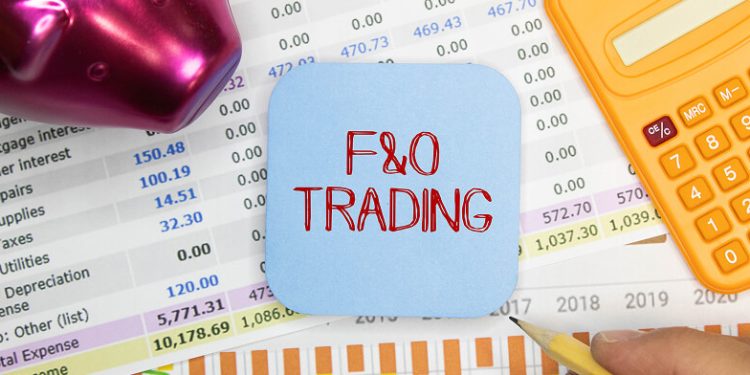Derivatives trading involves several risks. Price volatility creates the main risk as market fluctuations lead to losses for investors. Investors may lose more capital than they originally deposited, especially when using leveraged trading. Additionally, liquidity issues can hinder quick asset sales, and counterparty risks arise when the other party fails to meet their payment obligations. Educating traders about potential risks is essential to help prevent unexpected financial setbacks.
This article explains the risks that affect derivatives trading while explaining their impact on financial investments.:
What Are Derivative Instruments?
Derivative instruments are financial contracts that derive their value from the performance of an underlying asset. This asset could be stocks, bonds, commodities, interest rates, currencies, or market indexes.
Derivatives are mainly used for two purposes:
- Hedging: Hedging is a risk management strategy used to protect against potential losses caused by adverse price movements in the market. It involves taking an offsetting position in a related asset, such as using derivatives like options or futures, to balance the impact of fluctuations in the price of the underlying asset.
- Speculation: Speculation is the practice of making financial decisions based on the expectation of future price movements. Traders aim to profit from market changes, but this comes with higher risks as predictions may not always align with reality. It involves actively seeking opportunities for profit through market fluctuations.
Recommended Read: What are Different Types of Derivative Strategies?
Step into the world of Futures & Options — Open your Demat account
Types of Derivatives
Here are different types of derivative contracts, each serving unique purposes in managing risk or speculating on market movements:
- Futures Contracts: These are agreements to buy or sell an underlying asset at a specific price on a future date. Futures contracts are standardised and traded on exchanges, making them highly liquid and regulated. They are often used by traders to hedge against or speculate on price fluctuations of commodities, currencies, or financial instruments.
- Options Contracts: These contracts give the holder the right, but not the obligation, to buy or sell an underlying asset at a predetermined price before a set expiration date. Options are flexible instruments used to hedge risk or speculate on future price movements. They come in two types, call options (right to buy) and put options (right to sell).
- Forwards Contracts: These are similar to futures contracts but are privately negotiated between two parties. Forwards allow buyers and sellers to agree on a price for an asset at a specific future date. Unlike futures, they are customisable, and since they are not traded on exchanges, they are subject to counterparty risk.
- Swaps: Swaps involve the exchange of cash flows or financial instruments between two parties, usually to manage risk related to interest rates, currencies, or commodities. Common types of swaps include interest rate swaps and currency swaps, where parties agree to exchange fixed and variable interest payments or currency-based transactions.
10 Main Risks Involved in Derivatives Trading
These risks make derivatives trading complex and require careful analysis, risk management strategies, and monitoring to protect investors and institutions from significant financial losses.
Market Risk
The market risk represents financial losses that stem from unfavorable market movements of derivative-linked asset prices. Different markets influence price shifts of underlying assets through various elements that include both stock prices and commodity prices alongside interest rates and currency exchange fluctuations.
Credit Risk (Counterparty Risk)
In derivative contracts, the party involved exposes itself to credit risk (also known as counterparty risk) when one of them fails to fulfill their financial obligations, which include payments or asset delivery terms. Over-the-counter (OTC) derivatives remain under special risk exposure due to their private nature since they do not occur on formal exchanges.
Liquidity Risk
A trader faces liquidity risk whenever they lack sufficient market activity for derivative position trading due to low volumes or restricted market participants, which prevents quick buying or selling at preferred prices. While in this situation, the trader may need to face delayed transactions alongside required price lowering of assets or may experience prolonged asset holding durations.
Operational Risk
The operational risk emerges as a result of internal system breakdowns and procedural problems, as well as human errors while executing and managing derivative trades. The risk management system encompasses technical problems as well as system failures, data entry mistakes, communication breakdowns, and trade processing settlement issues.
Leverage Risk
The use of derivatives allows traders to control substantial financial positions through limited capital allocation through leverage. The magnification factor works to increase the size of both achievable profits and possible losses. Using leverage provides accelerated profit gains when market movements align with your position; however, the opposite market direction creates major financial losses.
Model Risk
Model Risk emerges because the mathematical or statistical models for pricing derivatives and their assessment methods either contain flaws or are too simplistic, or start from bad fundamental assumptions. When real market behaviors are inaccurately depicted and risk factors are overlooked, it results in both mispricing in the market and incorrect risk assessments, which can ultimately cause substantial financial harm.
Interest Rate Risk
Derivatives instruments face valuation modifications from interest rate impacts, which constitute Interest Rate Risk. Derivatives tied to bond products and interest rate swaps face high vulnerability to interest rate fluctuations. The price movements of underlying instruments due to interest rate changes lead to derivative contract value modifications.
Volatility Risk
Volatility risk refers to the potential for changes in the market prices of a derivative due to fluctuations in market volatility. The value of options trading assets connects directly to market volatility, making this risk especially critical within options trading.
Legal and Regulatory Risk
Legal and Regulatory Risk emerges from unclear legal structures that regulate derivative trading activities. Changes in regulations and legal conflicts regarding contract terms, as well as modifications in relevant laws, represent potential risks throughout derivative contract trading and execution activities.
Systemic Risk
A failure of any single institution or major derivatives market event can establish systemic risk, which spreads financial instability throughout various markets. A single player’s collapse from this risk establishes a sequence of events that produces broad market issues and possibly triggers a financial crisis.
Conclusion
Derivatives trading can offer many benefits, but it also comes with several important risks. These include market, credit, liquidity, and leverage risks, among others. Understanding each type of risk helps investors make better decisions and avoid unexpected losses. With careful planning, proper risk management, and awareness of market conditions, traders can use derivatives more safely and effectively in their financial strategies. Always trade with knowledge and caution.






